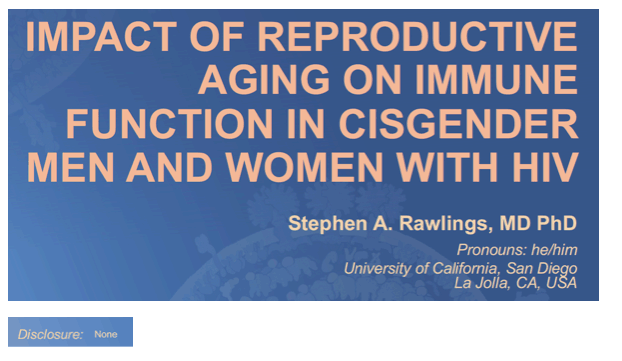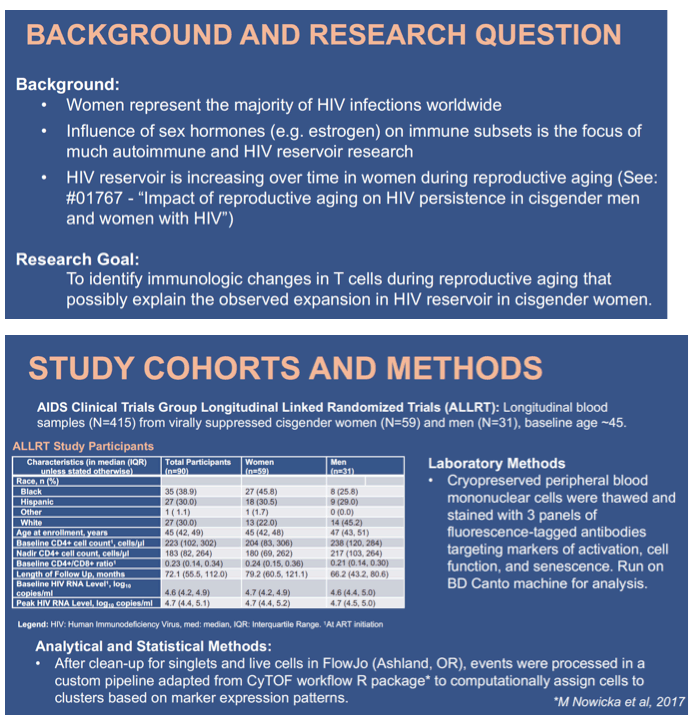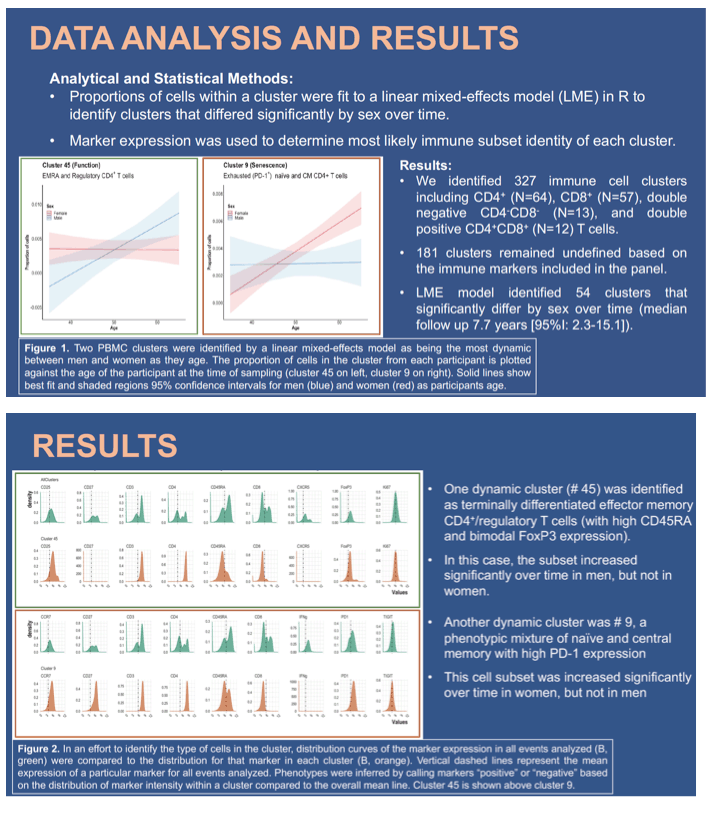 |
 |
 |
| |
IMPACT OF REPRODUCTIVE AGING ON IMMUNE
FUNCTION IN CISGENDER MEN AND WOMEN WITH HIV
|
| |
| |
CROI 2021 March 6-10 Reported by Jules Levin
Stephen A . Rawlings1, Antoine Chaillon1, Masato Nakazawa1, Eileen P. Scully2, Brendon Woodworth1, Christina Huynh1, Christy Anderson1, Jonathan Karn3, Alan Landay4, Sara Gianella1
1University of California San Diego, La Jolla, CA, USA, 2The Johns Hopkins University School of Medicine, Baltimore, MD, USA, 3Case Western Reserve University, Cleveland, OH, USA, 4Rush University, Chicago, IL, USA
Background: Women represent more than half of all HIV infections. Understanding the changes in the immune system during reproductive aging is crucial to inform treatment and cure strategies.
Methods: Longitudinal samples (N=415) from virally suppressed cis-gendered women (N=61) and men (N=31) were retrospectively identified from the AIDS Clinical Trials Group Longitudinal Linked Randomized Trials (ALLRT) population. Participants were aged 40-55 at the time of ART initiation and virally suppressed (<20 copies/ml) throughout the study period. Participants did not report
taking hormonal therapy during follow-up. Cryopreserved peripheral blood mononuclear cells were thawed and stained with a panel of fluorescent-tagged antibodies to identify cell populations of interest. Flow cytometric analysis included initial gating for singlet events and cell viability, followed by captured event clustering with the R software package, Phenograph. Immune phenotypes were assigned using a computational algorithm and confirmed manually. Clusters were analyzed longitudinally for significant variability across participants by sex using a linear mixed-effects (LME) model.
Results: We identified 327 immune cell clusters including CD4+ (N=64), CD8+ (N=57), double negative CD4-CD8- (N=13), and double positive CD4+CD8+ (N=12) T cells. The remaining 181 clusters remained undefined based on the immune markers included in the panel. LME models identified 54 clusters that significantly differ by sex (median follow up 7.7 years [95%I: 2.3-15.1]). The most dynamic T cell cluster was a phenotypic mixture of naïve and central memory with high PD-1 expression (cluster 9), suggesting associated inflammatory responses and functional exhaustion with a possible link to HIV reservoir expansion. This cell subset was increased significantly over time in women, but not in men (Fig.1A). Another dynamic cluster (cluster 45, Fig. 1A) was identified as terminally differentiated effector memory CD4+/regulatory T cells (with high CD45RA and bimodal FoxP3 expression). In this case, the subset increased significantly over time in men, but not in women. Men also experienced a faster decline in double negative (CD4-CD8-) T cell clusters and double positive T cell clusters.
Conclusion: Women have increasing exhausted T cells as they age, whereas men have an increasing population of regulatory type T cells. These changes in immune cell phenotype may be linked to comorbidities associated with sex- specific patterns of inflammaging and HIV persistence.



|
| |
|
 |
 |
|
|